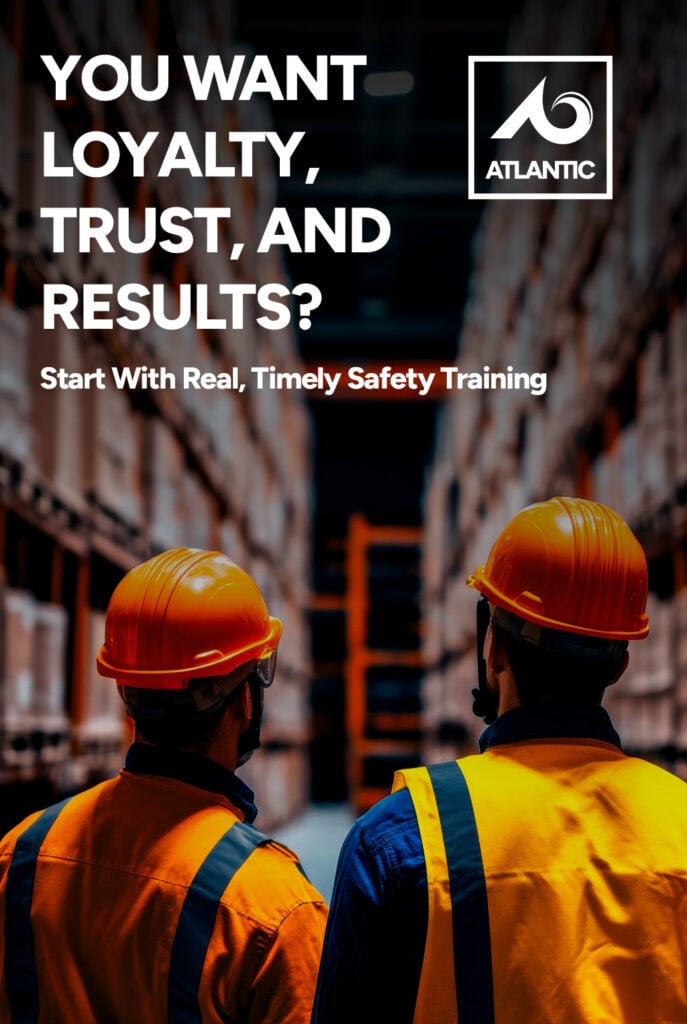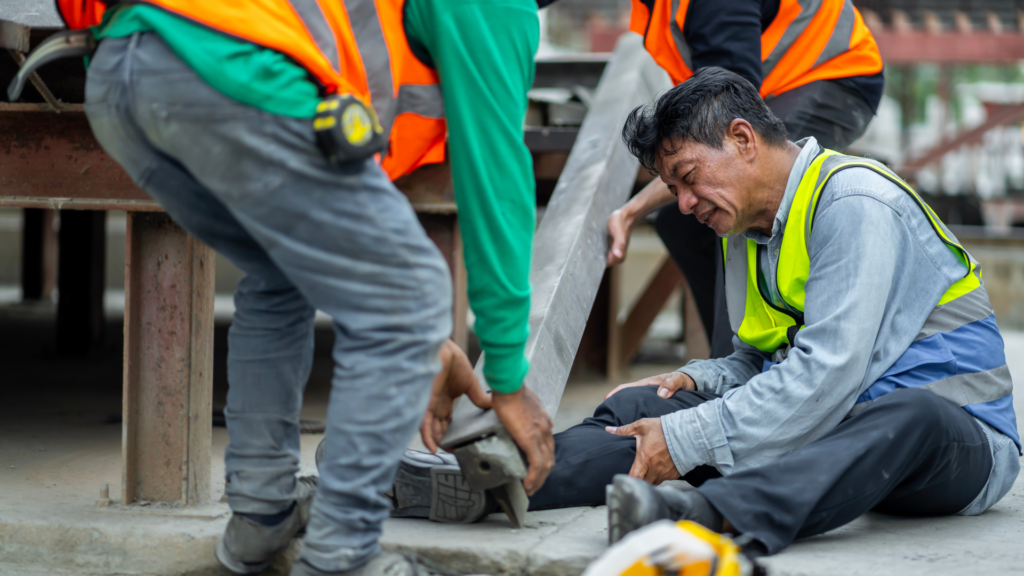May 27, 2025
Why Most Safety Training Fails Before It Starts (And How to Fix It)

May 27, 2025


Let’s address the elephant in the room. If your safety training content is boring, people will mentally check out in record time. No matter how important the topic is- chemical handling, forklift operation, emergency evacuation- if the delivery is dry, people aren’t absorbing anything. And that means your training isn’t working.
Boring training looks like this:
Monotone voiceovers that sound like someone is being forced to read aloud.
Safety training doesn’t have to be a stand-up comedy show. But it should at least be engaging enough to make people listen. If your training is something your employees dread, then congratulations, it’s failed before it started.
Let’s rip the band-aid off. Most safety training is bad. Not just “meh,” but actively harmful to your goals because it gives you the illusion of compliance while your employees are mentally on a beach in Tahiti.
We’re talking slideshows that look like they were designed in 1997. Videos that feel like punishment. Zero follow-up. No personalization. Somehow, we’re surprised when safety incidents still happen.
Here’s the kicker: most safety training fails before it even begins. Before the first click, before the intro slide, before someone says, “Let’s get started.” And today, we’re calling it out and showing you how to fix it.
Ever sat through a training session and thought, “If I click fast enough, maybe I’ll survive this”? That’s what passive learning does. And it’s alarmingly common.
Too many safety programs rely on one-way delivery:
Except… not really. That’s not learning. That’s barely surviving.
Adults retain information best when they’re actively involved. Through interaction, discussion, real-life scenarios, or even just being asked a thoughtful question. Without engagement, you’re checking a box, not changing behavior.
Want to know if your training is effective? Ask someone a week later what they remember. If the answer is “not much,” that’s your clue.

Spoiler alert: They don’t. People learn differently. Some absorb information visually, others through interaction or repetition. Some want bullet points, others need real-world context. When your training treats everyone like identical learning robots, you’re setting yourself up for failure.
A 20-year warehouse veteran doesn’t need the same introduction to PPE as a fresh-out-of-orientation office assistant. Yet, many safety programs use the same bland video or handbook for everyone. Not only is it ineffective, but it’s also insulting.
Training should be personalized by role, department, and risk level. Otherwise, you’re wasting time and resources. And worse, leaving real gaps in knowledge that can lead to injury or liability.

Here’s where most training flatlines: it jumps straight into the rules without ever explaining why they matter.
“Wear this harness.” “Fill out this report.” “Follow this process.”
Cool. But why?
When you strip out the context, the real-world examples, and the stories of what can go wrong, you lose buy-in. People don’t just want to know what to do. They want to know why it matters. Especially when that action might feel inconvenient, uncomfortable, or time-consuming.
If your team doesn’t understand that skipping a lockout/tagout procedure could literally kill someone, they’re not going to treat it with the seriousness it deserves.

Imagine brushing your teeth once and expecting perfect dental health forever. That’s what most companies do with safety training. One-and-done. Set it and forget it.
But training isn’t a one-time event. It’s an ongoing process. If you’re not reinforcing key messages through regular touchpoints, like toolbox talks, micro-lessons, quick refreshers, or informal coaching, you’re inviting people to forget everything they just learned.
Safety habits form through repetition, not a single afternoon of forced video watching. If your training ends when the video does, it never really started.
Imagine brushing your teeth once and expecting perfect dental health forever. That’s what most companies do with safety training. One-and-done. Set it and forget it.
But training isn’t a one-time event. It’s an ongoing process. If you’re not reinforcing key messages through regular touchpoints, like toolbox talks, micro-lessons, quick refreshers, or informal coaching, you’re inviting people to forget everything they just learned.
Safety habits form through repetition, not a single afternoon of forced video watching. If your training ends when the video does, it never really started.
Let’s talk about false positives. Just because someone completed a course or passed a quiz doesn’t mean they understood or, more importantly, that they’ll apply it.
A lot of training software will proudly report “100% completion rates” like it’s a badge of honor. But completion doesn’t equal comprehension. And it doesn’t equal safe behavior on the floor.
If your LMS only tracks clicks, views, or time spent on a module, it’s not telling you the full story. You need tools that evaluate behavior change, real-world application, and ongoing compliance.
Otherwise, your training is just an expensive illusion of safety.
Here’s the dirty little secret: Many businesses assume training is working simply because it exists.
“We covered that in training.” “Everyone signed off.” “We did our part.”
Sound familiar?
This mindset passes the responsibility from the organization to the employee without actually confirming if the training worked. It’s a legal buffer, sure. But it’s not a safety strategy.
Hope is not a substitute for accountability. The best programs build in mechanisms to measure, reinforce, and adapt based on what’s happening on the floor. Not just what someone clicked through online.
Let’s ditch the doom spiral. Fixing bad training doesn’t require a total overhaul. You can start smart, small, and now.
Here’s what works:
You don’t need to be flashy. You just need to be intentional.
At Atlantic Training, we were just as fed up with boring, ineffective safety training as you are, so we built something better. Our mission? To make safety and compliance something your team learns, remembers, and applies on the job.
Our massive training course library is packed with modern, binge-worthy videos designed for real people in real roles. Whether you’re training new hires, seasoned operators, or the whole dang warehouse, we’ve got something that fits.
And when it comes to managing it all? That’s where our WAVE Compliance Suite shines. You’ll get access to course tracking, recordkeeping, incident reporting, SDS management, and more. Free with any course purchase.
Need a custom plan? Want to chat with an actual human (no bots allowed)? Let’s talk. We’ll help you build a training strategy that doesn’t just check the box. It changes behavior.

Ready to let the data do the talking? Start by browsing our training catalog, We’ve got more than 1,000 OSHA-ready courses that roll out in minutes, not months.
Occupational Safety and Health Administration (OSHA) – Training Requirements
United States Department of Labor (USDOL) – Workplace Training Resources
Centers for Disease Control and Prevention (CDC) – Training and Workforce Development

